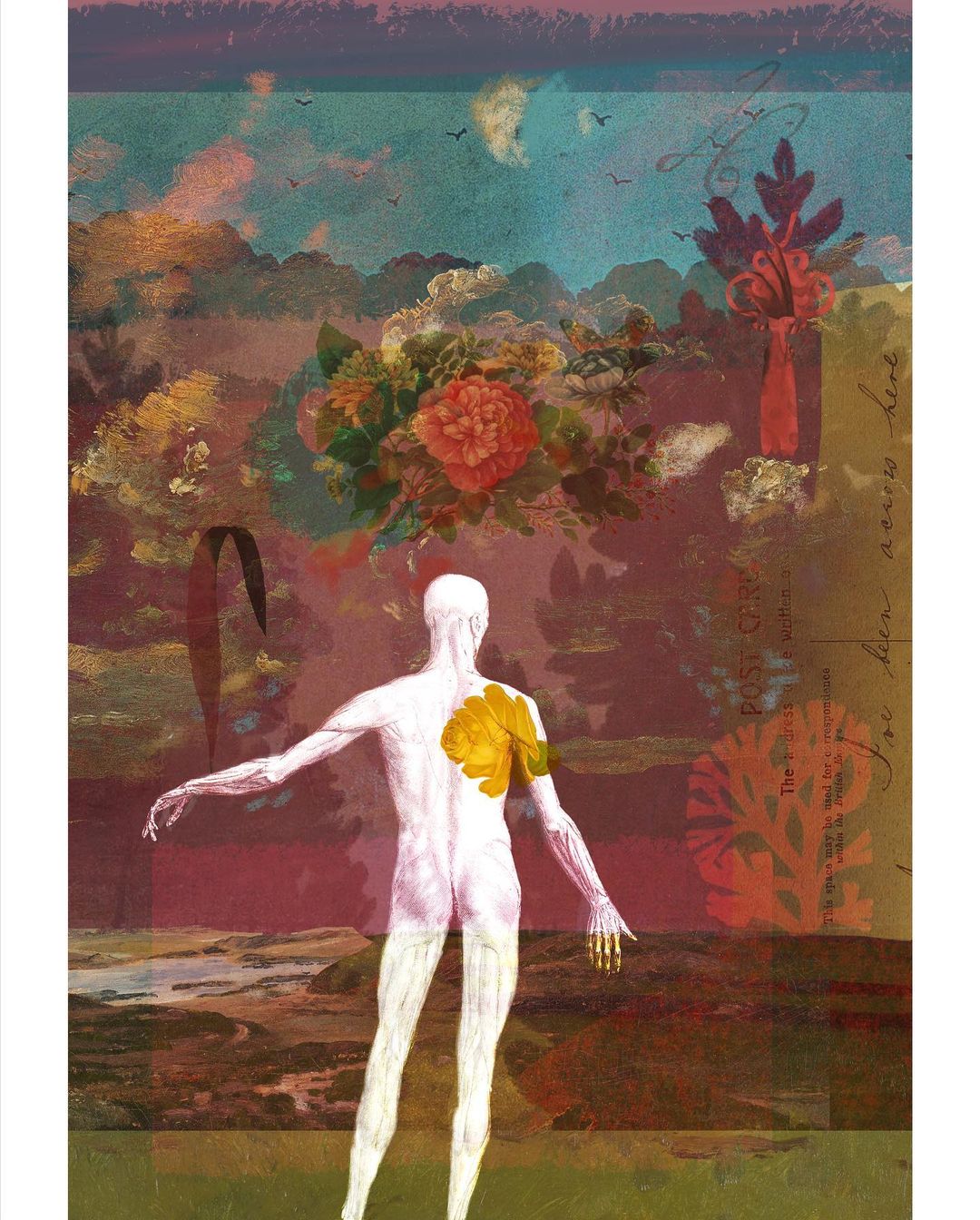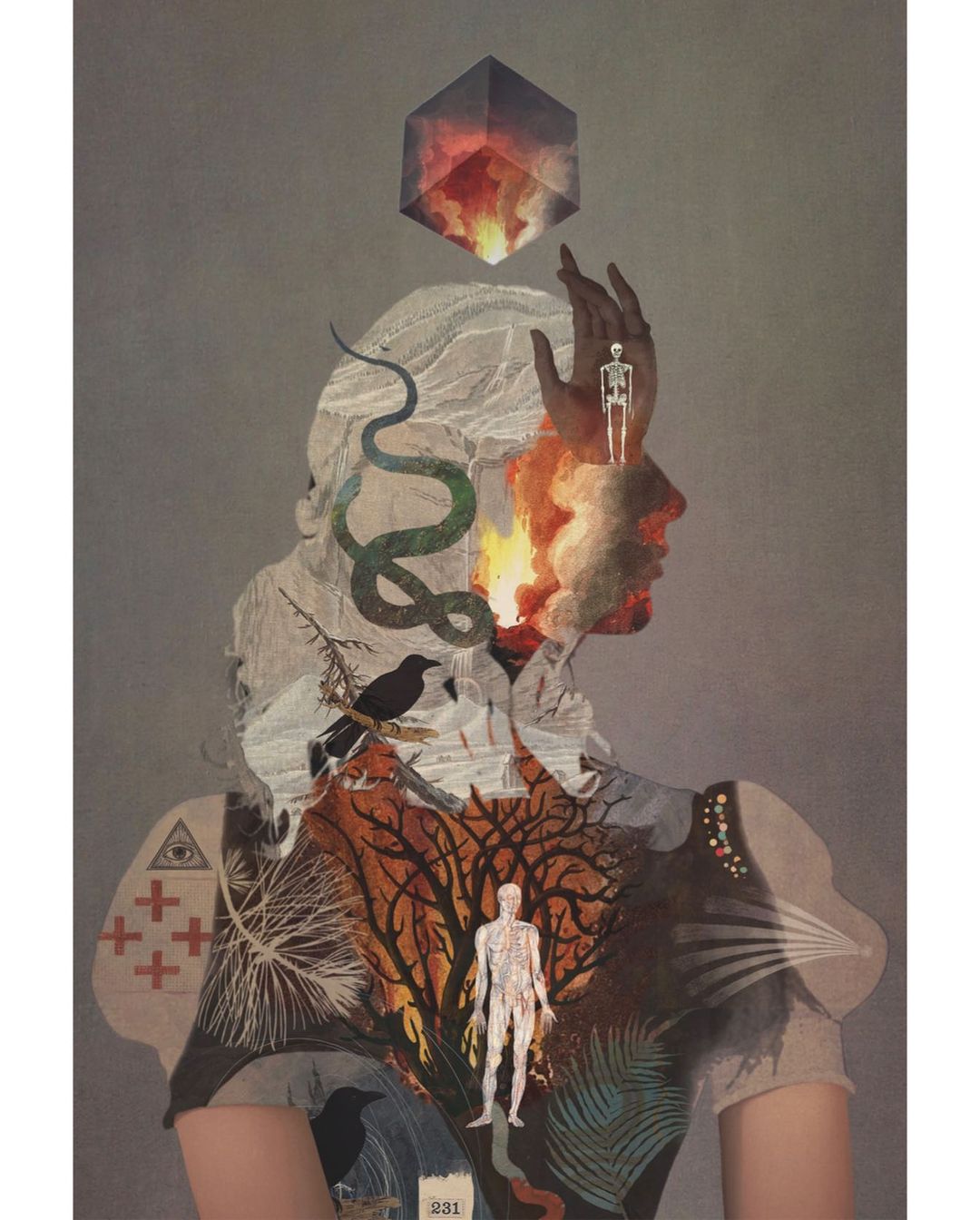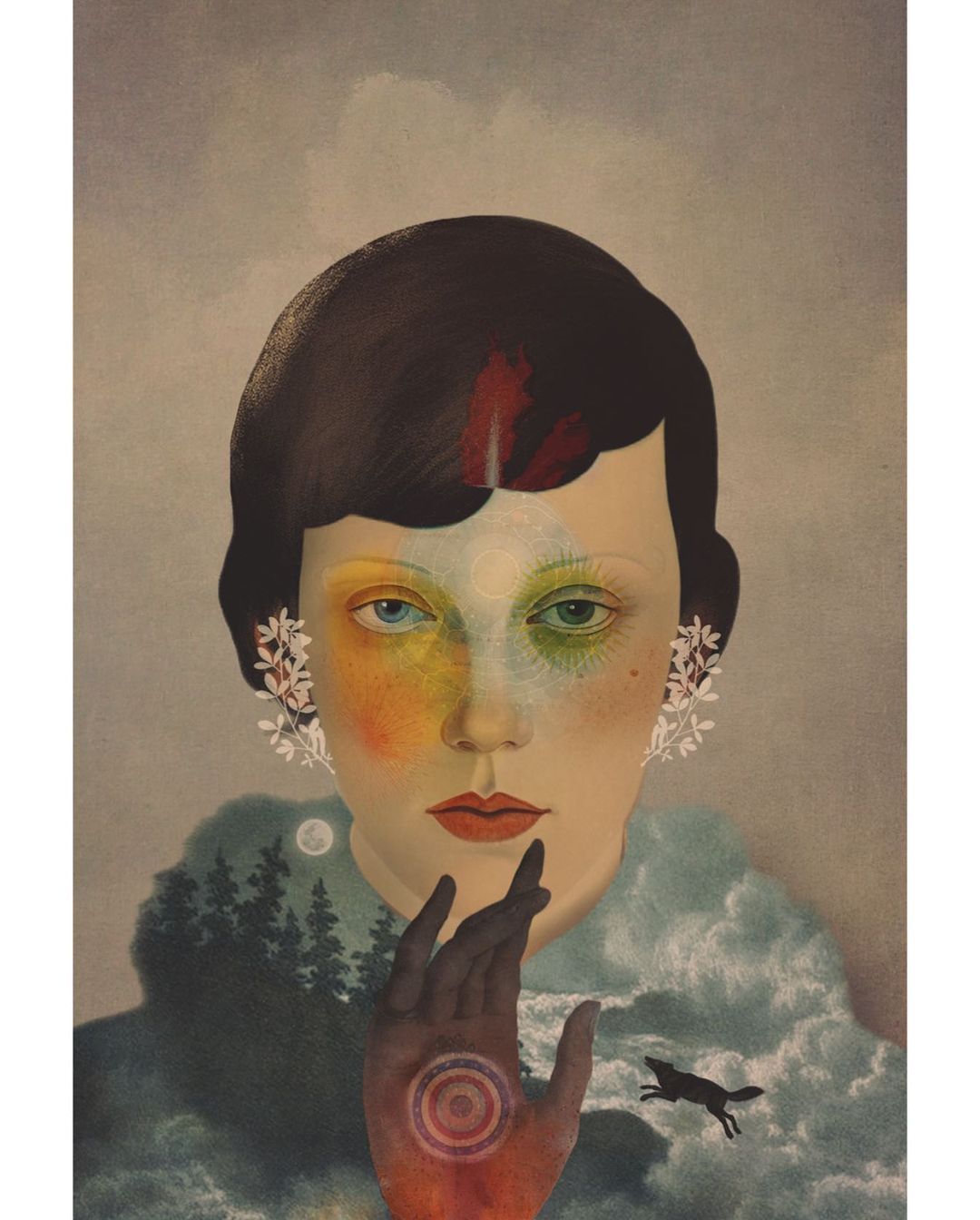b
Sarah Jarrett
Sarah Jarrett’s gently intriguing, melancholy collages combine strong color, imagery from the 19th and early 20th centuries, and a fabulous sense of surrealism. She is highly prolific, with a profusion of emotive collage works. Transposition, juxtaposition, silhouettes, and flowers all play a large role in her work. Lovely and mysterious and musing, the many layers and textures of her ethereal world draw the viewer in to its sense of tragic intimacy.


